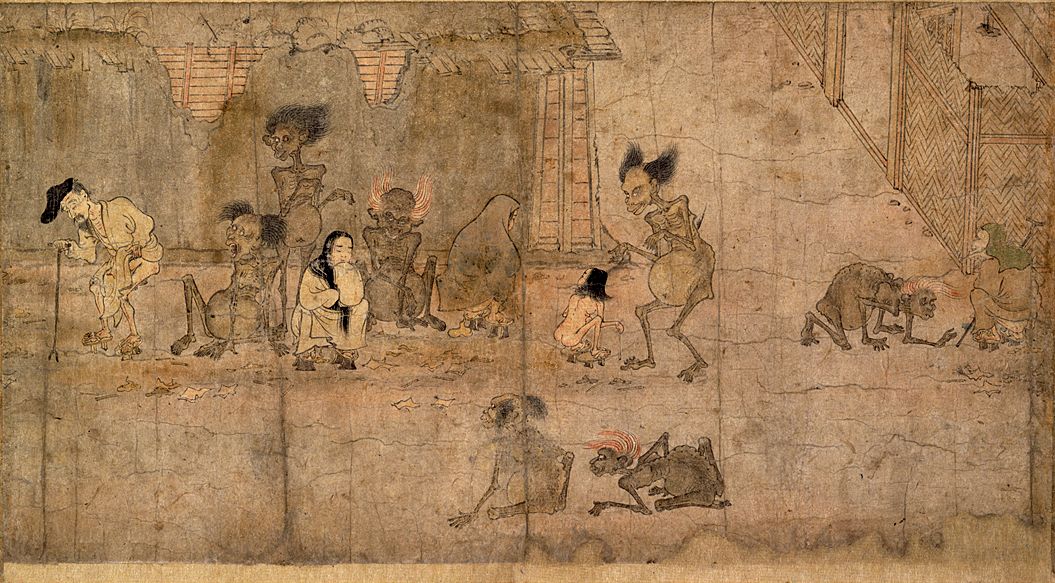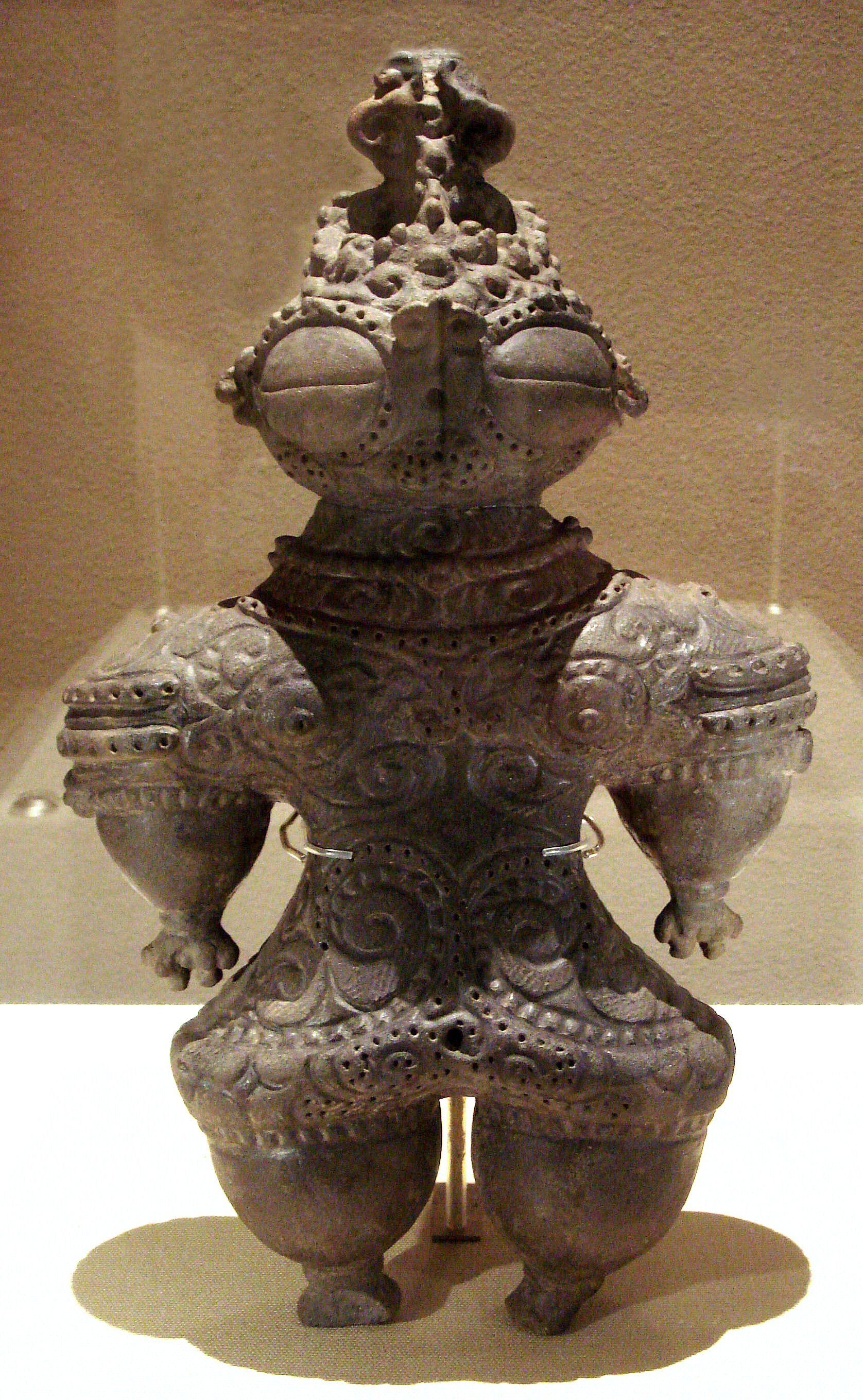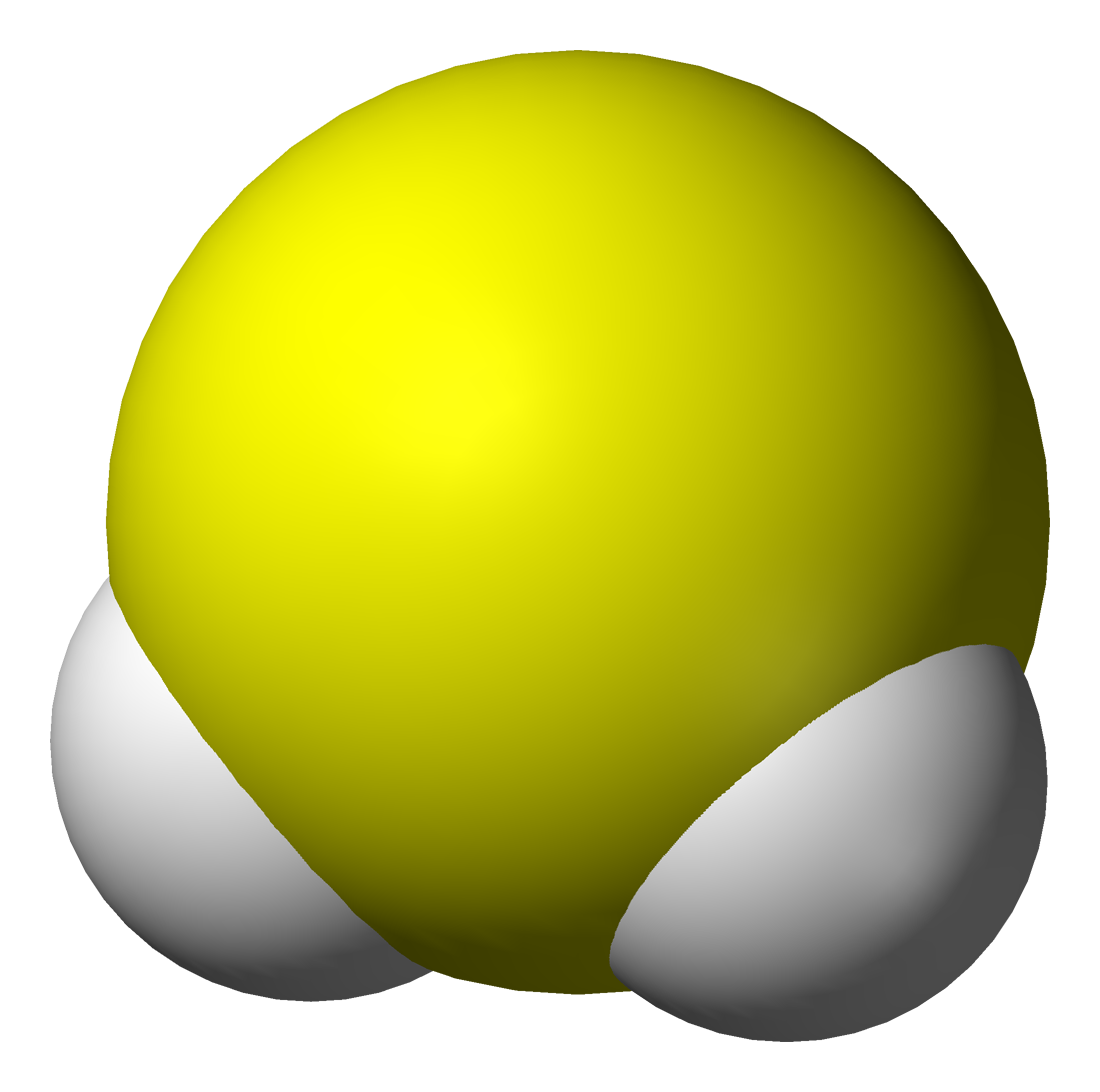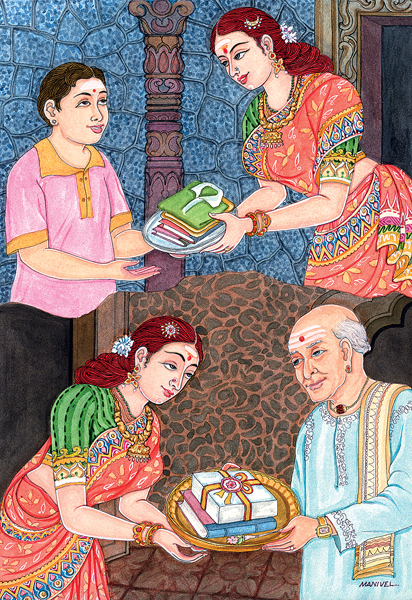|
Preta
''Preta'' (, ''yi dags''), also known as hungry ghost, is the Sanskrit name for a type of supernatural being described in Hinduism, Buddhism, Taoism, and Chinese folk religion as undergoing suffering greater than that of humans, particularly an extreme level of hunger and thirst. They have their origins in Indian religions and have been adopted into East Asian religions via the spread of Buddhism. Preta is often translated into English as " hungry ghost" from the Chinese and East Asian adaptations. In early sources such as the ''Petavatthu'', they are much more varied. The descriptions below apply mainly in this narrower context. The development of the concept of the preta started with just thinking that it was the soul and ghost of a person once they died, but later the concept developed into a transient state between death and obtaining karmic reincarnation in accordance with the person's fate. In order to pass into the cycle of karmic reincarnation, the deceased's family mus ... [...More Info...] [...Related Items...] OR: [Wikipedia] [Google] [Baidu] |
Desire Realm
The desire realm (Sanskrit: कामधातु, ''kāmadhātu'') is one of the trailokya or three realms (Sanskrit: धातु, ''dhātu'', Tibetan: ''khams'') in Buddhist cosmology into which a being caught in '' '' may be reborn. The other two are the Form Realm (Sanskrit: ''rūpadhātu'') and the Formless Realm (''ārūpadhātu''). Within the desire realm are either five or six domains (Sanskrit: ''gati'', also sometimes translated as "realm"). In Tibetan Buddhism, there are six domains (), and in Theravada Buddhism there are only five, because the domain of the Asuras is not regarded as separate from that of the Nāgas. The concept of these five realms is also to be found in Taoism and Jainism. The '' Śūraṅgama Sūtra'' in Mahayana Buddhism regarded the 10 kinds of Xian as separate immortal realms between the deva and human realms. The six domains of the desire realm are also known as the "six paths of ... [...More Info...] [...Related Items...] OR: [Wikipedia] [Google] [Baidu] |
Hungry Ghost
Hungry ghost is a term in Buddhism and Chinese traditional religion, representing beings who are driven by intense emotional needs in an animalistic way. The term zh, c= 餓鬼, p=èguǐ, l=hungry ghost is the Chinese translation of the Sanskrit term ''preta'' in Buddhism. "Hungry ghosts" play a role in Chinese Buddhism, Taoism, and in Chinese folk religion. The term is not to be confused with the generic term for "ghost" or damnation, (i.e. the residual spirit of a deceased ancestor). The understanding is that people first become a regular ghost when they dieVenerable Yin-shun. ''The Way to Buddhahood''. Massachusetts: Wisdom Publications: 1998. and then slowly weaken and eventually die a second time.Teiser, Stephen F. ''The Ghost Festival in Medieval China''. New Jersey: Princeton University Press: 1988. Hungry ghosts, by contrast, are a much more exceptional case, and would only occur in very unfortunate circumstances, such as if a whole family were killed or when a family ... [...More Info...] [...Related Items...] OR: [Wikipedia] [Google] [Baidu] |
Petavatthu
__NOTOC__ The ''Petavatthu'' () is a Theravada Buddhist scripture, included in the Minor Collection (''Khuddaka Nikaya'') of the Pali Canon's Sutta Pitaka. It ostensibly reports stories about and conversations among the Buddha and his disciples, and it dates to about 300BC at the earliest.. It is composed of 51 verse narratives describing specifically how the effects of bad acts can lead to rebirth into the unhappy world of petas (ghosts) in the doctrine of kamma. More importantly, it details how meritorious actions by the living can benefit such suffering beings. The scripture also includes the story of Mahā Moggallāna helping Sāriputta's mother from her previous life in the hungry ghost realm, his discussions with hungry ghosts, and his understanding of the realm. Before being born as a ghost, Sāriputta's mother was born in the hell realm. It also includes a story of how making offerings to the monks as a form of merit-making to increase the chance of a hungry gho ... [...More Info...] [...Related Items...] OR: [Wikipedia] [Google] [Baidu] |
Supernatural
Supernatural phenomena or entities are those beyond the Scientific law, laws of nature. The term is derived from Medieval Latin , from Latin 'above, beyond, outside of' + 'nature'. Although the corollary term "nature" has had multiple meanings since the ancient world, the term "supernatural" emerged in the Middle Ages and did not exist in the ancient world. The supernatural is featured in folklore and religious contexts, but can also feature as an explanation in more secular contexts, as in the cases of superstitions or belief in the paranormal. The term is attributed to non-physical entity, non-physical entities, such as angels, demons, gods and ghost, spirits. It also includes claimed abilities embodied in or provided by such beings, including Magic (supernatural), magic, telekinesis, levitation (paranormal), levitation, precognition and extrasensory perception. The supernatural is hypernymic to religion. Religions are standardized supernaturalist worldviews, or at least m ... [...More Info...] [...Related Items...] OR: [Wikipedia] [Google] [Baidu] |
Heian Period
The is the last division of classical Japanese history, running from 794 to 1185. It followed the Nara period, beginning when the 50th emperor, Emperor Kammu, moved the capital of Japan to Heian-kyō (modern Kyoto). means in Japanese. It is a period in Japanese history when the Chinese influence on Japanese culture, Chinese influences were in decline and the national culture matured. The Heian period is also considered the peak of the Japanese Emperors of Japan, imperial court, noted for its Japanese art, art, especially Japanese poetry, poetry and Japanese literature, literature. Two syllabaries unique to Japan, katakana and hiragana, emerged during this time. This gave rise to Japan's famous vernacular literature, with many of its texts written by court ladies who were not as educated in Chinese as their male counterparts. Although the Imperial House of Japan had power on the surface, the real power was in the hands of the Fujiwara clan, a powerful Kuge, aristocratic family wh ... [...More Info...] [...Related Items...] OR: [Wikipedia] [Google] [Baidu] |
Japanese Art
Japanese art consists of a wide range of art styles and media that includes Jōmon pottery, ancient pottery, Japanese sculpture, sculpture, Ink wash painting, ink painting and Japanese calligraphy, calligraphy on silk and paper, Ukiyo-e, paintings and Woodblock printing in Japan, woodblock prints, Japanese pottery and porcelain, ceramics, origami, bonsai, and more recently manga and anime. It has a long history, ranging from the beginnings of human habitation in Japan, sometime in the 10th millennium BCE, to the present day. Japan has alternated between periods of exposure to new ideas, and long periods of minimal contact with the outside world. Over time the country absorbed, imitated, and finally assimilated elements of foreign culture that complemented already-existing aesthetic preferences. The earliest complex art in Japan was produced in the 7th and 8th centuries Buddhist art in Japan, in connection with Buddhism. In the 9th century, as the Japanese began to turn awa ... [...More Info...] [...Related Items...] OR: [Wikipedia] [Google] [Baidu] |
Feces
Feces (also known as faeces American and British English spelling differences#ae and oe, or fæces; : faex) are the solid or semi-solid remains of food that was not digested in the small intestine, and has been broken down by bacteria in the large intestine. Feces contain a relatively small amount of metabolic waste products such as bacterially-altered bilirubin and dead epithelial cells from the lining of the gut. Feces are discharged through the anus or cloaca during defecation. Feces can be used as fertilizer or soil conditioner in agriculture. They can also be burned as dry animal dung fuel, fuel or dried and used for wattle and daub, construction. Some medicinal uses have been found. In the case of human feces, fecal transplants or fecal bacteriotherapy are in use. Urine and feces together are called excretion, excreta. Characteristics The distinctive odor of feces is due to skatole, and thiols (sulfur-containing compounds), as well as amines and carboxylic acids. Sk ... [...More Info...] [...Related Items...] OR: [Wikipedia] [Google] [Baidu] |
Cadaver
A cadaver, often known as a corpse, is a Death, dead human body. Cadavers are used by medical students, physicians and other scientists to study anatomy, identify disease sites, determine causes of death, and provide tissue (biology), tissue to repair a defect in a living human being. Students in medical school study and dissect cadavers as a part of their education. Others who study cadavers include archaeologists and arts students. In addition, a cadaver may be used in the development and evaluation of surgical instruments. The term ''cadaver'' is used in courts of law (and, to a lesser extent, also by media outlets such as newspapers) to refer to a dead body, as well as by recovery teams searching for bodies in natural disasters. The word comes from the Latin word ''cadere'' ("to fall"). Related terms include ''cadaverous'' (resembling a cadaver) and ''cadaveric spasm'' (a muscle spasm causing a dead body to twitch or jerk). A cadaver graft (also called “postmortem graft”) ... [...More Info...] [...Related Items...] OR: [Wikipedia] [Google] [Baidu] |
Pica (disorder)
Pica ("PIE-kuh"; IPA: /ˈpaɪkə/) is the craving or consumption of objects that are not normally intended to be consumed. It is classified as an eating disorder but can also be the result of an existing mental disorder. The ingested or craved substance may be biological, natural, or manmade. The term was drawn directly from the medieval Latin word for magpie, a bird subject to much folklore regarding its opportunistic feeding behaviors. According to the '' Diagnostic and Statistical Manual of Mental Disorders, 5th Edition'' (DSM-5), pica as a standalone eating disorder must persist for more than one month at an age when eating such objects is considered developmentally inappropriate, not part of culturally sanctioned practice, and sufficiently severe to warrant clinical attention. Pica may lead to intoxication in children, which can result in an impairment of both physical and mental development. In addition, it can cause surgical emergencies to address intestinal obstruction ... [...More Info...] [...Related Items...] OR: [Wikipedia] [Google] [Baidu] |
Karma
Karma (, from , ; ) is an ancient Indian concept that refers to an action, work, or deed, and its effect or consequences. In Indian religions, the term more specifically refers to a principle of cause and effect, often descriptively called the principle of karma, wherein individuals' intent and actions (cause) influence their future (effect): Good intent and good deeds contribute to good karma and happier Reincarnation, rebirths, while bad intent and bad deeds contribute to bad karma and worse rebirths. In some scriptures, however, there is no link between rebirth and karma. In Hinduism, karma is traditionally classified into four types: Sanchita karma (accumulated karma from past actions across lifetimes), Prārabdha karma (a portion of Sanchita karma that is currently bearing fruit and determines the circumstances of the present life), Āgāmi karma (future karma generated by present actions), and Kriyamāṇa karma (immediate karma created by current actions, which may y ... [...More Info...] [...Related Items...] OR: [Wikipedia] [Google] [Baidu] |
Eternity
Eternity, in common parlance, is an Infinity, infinite amount of time that never ends or the quality, condition or fact of being everlasting or eternal. Classical philosophy, however, defines eternity as what is timeless or exists outside time, whereas sempiternity corresponds to infinite duration. Philosophy Classical philosophy defines eternity as what exists outside time, as in describing timeless supernatural beings and forces, distinguished from sempiternity which corresponds to infinite time, as described in requiem prayers for the dead. Some thinkers, such as Aristotle, suggest the Eternity of the world, eternity of the natural cosmos in regard to both past and future eternal duration. Boethius defined eternity as "simultaneously full and perfect possession of interminable life". Thomas Aquinas believed that God's eternity does not cease, as it is without either a beginning or an end; the concept of eternity is of divine simplicity, thus incapable of being defined o ... [...More Info...] [...Related Items...] OR: [Wikipedia] [Google] [Baidu] |






